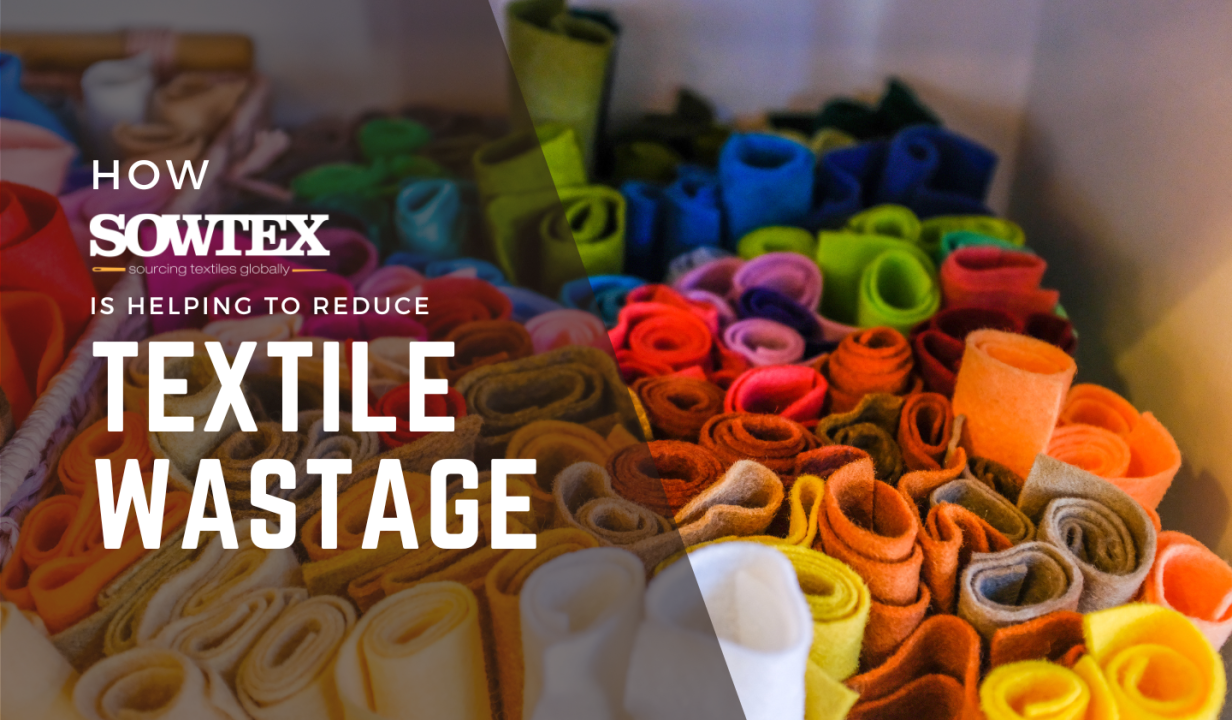How Sowtex Is Investing In Our Planet By Reducing Textile Wastage Drastically?
Over 92 million tonnes of #textile waste is generated and reported every year. With over 100 billion garments getting produced annually, 92 million tonnes, unfortunately, end up in landfills. To put things in perspective, it is safe to say that a rubbish truck full of clothes ends up in landfill sites every second. In an age of minimalism, green economy and sustainable business, Sowtex has taken charge to become an active player by making a green difference and investing in our planet since few years.
Years of being in the business and gaining expertise in the textile ecosystem, the founders and senior members of Team Sowtex have earned the right wisdom and decision-making power to recognize ways to reduce wastage. It has primarily been done by reducing the number of steps involved in completing the life cycle of a textile product from manufacturing to export. Additionally, initiatives like Sowtex Design Lab lead to a reduction in material usage, an increase in efficiency, and decrease in pollution.
- Reduced material usage: Each textile process typically involves the use of energy, water, and raw materials such as fibres, dyes, and chemicals. By reducing the number of processes required to create a textile product, there is a corresponding reduction in the amount of these resources used. This directly translates into a reduction in the generated waste. Sowtex is helping spread awareness about sustainable processes by sparking conversations between policy makers, stakeholders & Industry experts in the various panel discussions held during the Textile Sourcing Meet(s).
- Increased efficiency: With the lesser processes, only the most important and crucial ones get prioritised. This helps textile developers and stakeholders to focus their attention where it is most required. Companies like Yes Fashion & Rasik Vatika Clothing are already implemented these practises & manufacturing re-cycled polyester for commercial use.
- Less pollution: Many textile processes involve the use of chemicals and dyes that can be harmful to the environment. By bringing companies like Weaving Vibes to the forefront, Sowtex is promoting the use of sustainable eco-friendly fabrics like #Bamboo & #Hemp.
Overall, across the globe, established textile players have demonstrated history of reducing textile wastage in several ways – Improving the design process, Adopting efficient production processes, Recycling and reusing materials, Implementing waste management strategies & Educating employees and consumers thereby ensuring a smaller carbon footprint.
To give additional insights, there are some strategies that can be implemented in ‘procurement and product development’ adopted by Sowtex to reduce textile wastage:
- Implement Sustainable Sourcing: Sourcing sustainable materials and fabrics can reduce textile waste by minimizing the environmental impact of production and the amount of waste generated. This involves finding fabrics that are made from eco-friendly materials, such as recycled polyester or organic cotton, and sourcing from suppliers who especially prioritize sustainable manufacturing practices.
- Design for Durability: Designing products with longevity in mind has proven to reduce textile waste. By creating products that are well-made, durable, and timeless, customers are less likely to discard them after a few wears or a single season. In turn, this approach can also lead to increased customer loyalty and repeat business.
- Utilize Digital Tools: Sowtex offers digital tools such as digital sampling catalogues, 3D modelling software and virtual prototyping which can reduce textile waste by allowing designers to test and refine their products before they are physically produced. This approach can help identify design flaws early on, preventing costly and wasteful production runs.
- Lean Manufacturing: This involves optimizing manufacturing processes to reduce waste, minimize inventory, and increase efficiency.
- Recycling and Upcycling: Finally, implementing recycling and upcycling programs can help reduce textile waste by diverting discarded materials from landfills and repurposing them into new products. This approach can also create new revenue streams for companies and help reduce their environmental impact.
The future of textile waste in India and the world depends on a variety of factors, including government policies, industry practices, and consumer behaviour. Globally, less than 1% of textile waste is currently being recycled into new clothing, and the majority of it ends up in landfills or incinerated. It is estimated that the average person buys 60% more clothing than they did 15 years ago and keeps them for half as long. Textile giants like Sowtex are not waiting for EARTH DAY every year to find a long-term solution to reduce textile wastage; through awareness, behaviour change campaigns, working with long-lasting fabric, and sourcing #sustainable raw materials.


Comments
Post a Comment